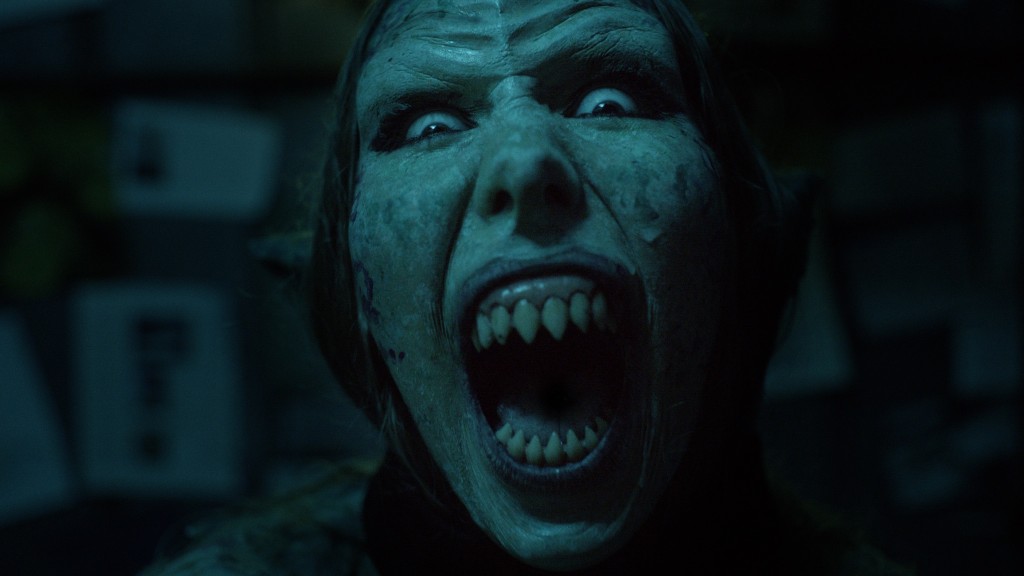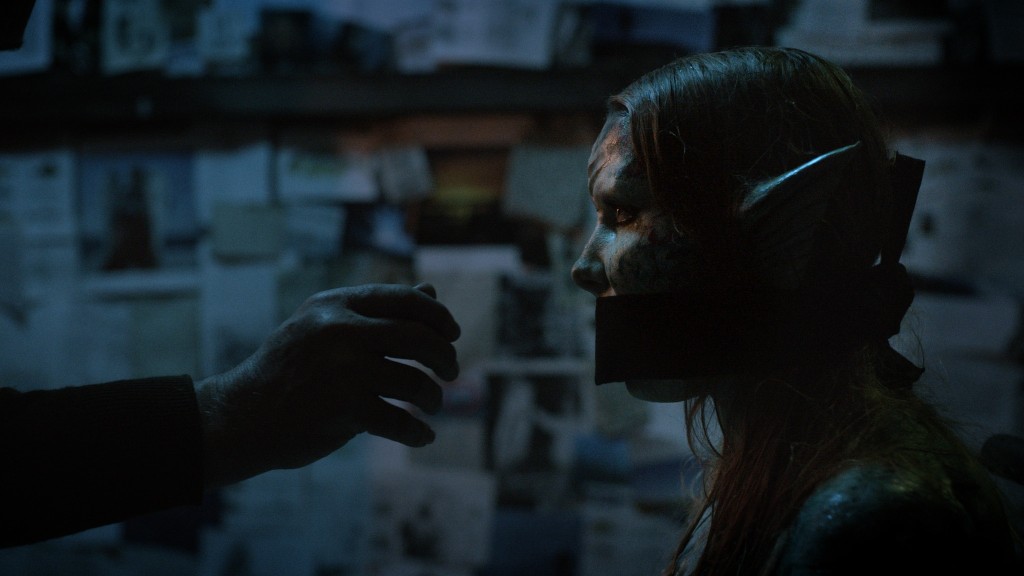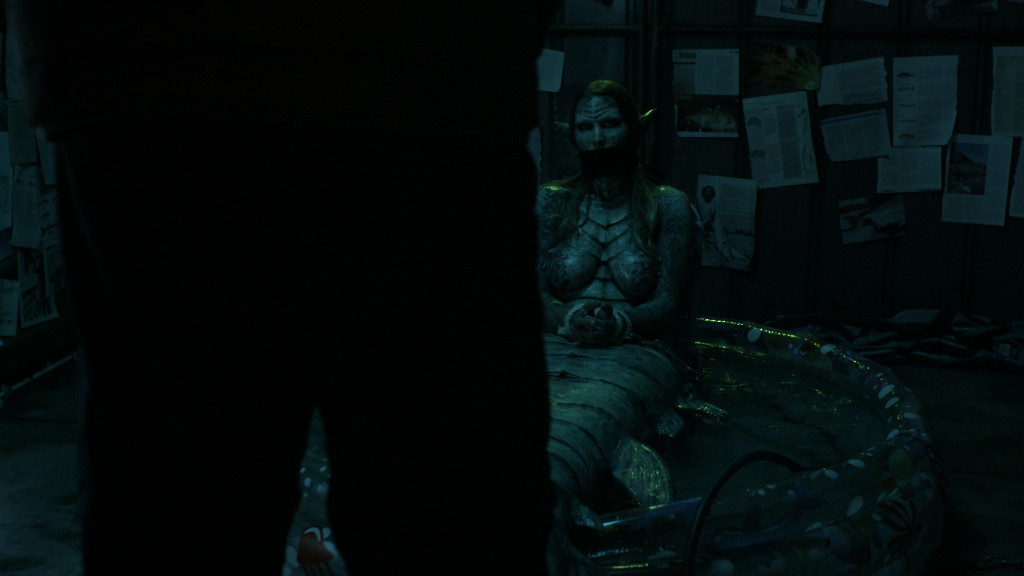THE MAN WHO CAUGHT A MERMAID
First time Australian director Kaitlin Tinker’s short film THE MAN WHO CAUGHT A MERMAID – which made waves internationally via the Fantasia International Film Festival’s “Born of Woman” program in July – had its long-awaited hometown premiere at Monster Fest in Melbourne, Australia on November 25th as part of the “Night Gallery” program of horror shorts. The film treats audiences to an articulate vision of male fantasy projection; it is a subversive tale paired with a unique grasp of visual art buy levitra online viagra and cinematography, beautiful practical creature effects involving 10 hours of makeup, and a dedication to exploring femininity and sexuality found in myths.
++++
Esinam Beckley: How did you start working with the idea/writing for this short?
Kaitlin Tinker: It kind of came levitra show pill about by mashing two concepts together. The myth of the mermaid, and I was in discussions with a visual artist. We levitra pills free sempal spoke at length of how there was a universal myth always related to femininity and sexuality. There was also nothing particularly Australian about the myth. I’m really interested in making work that has to do with modern myths, monsters, and fables. I wanted to write this modern retelling.
I grew up in Australian suburbia which is just outside of http://www.spectacularoptical.ca/2021/02/viagra-online-without-a-prescription/ the major cities. Nothing exciting happens there ever. It’s just families living door to door. It’s portrayed in Australia as this image of normality. When you leave…well everything dark happens behind closed doors. Nobody really knows who they’re living next to. I grew up in a house, next to this neighbor. We lived opposite bushland, and he would spend a lot of time in the bushland. He would go over there in this onesie and a beanie. He’d just spend hours over there. Sometimes he would take food scraps. We had no idea what he was doing. We assumed he was feeding some wild animals. Baby dingoes, kangaroos or whatever. I think these two ideas seemed to just click one day. So the protagonist is based on one of the neighborhood creeps. The mermaid just kind of evolved.
When I was writing it, the twist first came to me, then I built the story around it. So I just started pitching this idea, like what if there was this mermaid in a shed. I think the projection of male fantasy onto female bodies is something that is a real plague in storytelling. I guess we’re at a stage now with being aware, and becoming more conscious of that gaze, and wanting to do something about it. There is a Welsh myth of the selkie. “Selkie” translates as seal woman. I don’t know if you’ve heard anything about the myth, but essentially a woman transforms into a seal. If you steal a woman’s seal skin while she’s a woman, then you own her. So there’s a myth of a fisherman who steals the selkie seal skin, and forces her into marriage. It’s only after she’s had two children with him that she reclaims her sealskin, and turns to the ocean. What’s interesting is the horrific idea of possession. That women’s bodies are something to be possessed. I’m fascinated by the ownership of female bodies. I think this film is a great way of me being able to explore that projection. The delusion that someone owns something.
EB: It doesn’t seem like the work of a first time director. Did you have a lot of previous experience?
KT: I did a lot of work as a camera operator for a while. Also, before I did my film degree I was a visual artist. My major was drawing and painting. I think maybe my sense of composition comes from that. Also, I sometimes struggle with foresight. Sometimes it’s only when I get on set that I’ll be like, okay now I know what I want.
EB: You’ve created a lot of room for the audience to think about the issue of male fantasy, and the projection of that fantasy. Was this your intent?
KT: Totally. With this film, I was exploring the problem surrounding male desire. With my next film, I’m more interested in the reclamation of that power, and of a woman reclaiming that sense of possessing her own body.
EB: The makeup effects for your mermaid are slimy, dark, and very reptilian. How did you decide this was going to be the look of your mermaid?
KT: At the Tokyo Festival recently I had this question from a guy in the audience. He was talking about Daryl Hannah. He was like why wasn’t your mermaid beautiful? Aside from the issue of the whole film talking about male gaze, I think beauty is very subjective. Obviously, the Disney mermaid never did anything for me. There’s such beauty to this monstrous feminine of the mermaid. I had a lot of sessions with my concept designer Nick Hogios. We sat together, and spoke at length about how we saw our own version of the mermaid. A lot of the design elements we drew from existing fish. We thought how best can we animate a creature that has feminine sexual, sensual, elements, but that also has anatomically correct details? We looked at a lot of deep sea fish, and kind of fused the elements. There were a lot of debates over whether she should have hair or tentacles. The hair was a really important part for me as far as a throwback to Japanese horror and creature features. Everyone’s hair is slimy. We talked about whether she should have nipples or not. Sea mammals vs. reptiles. We put together our fantasy combination of what the mermaid would look like. We then took it to Sharp FX who were the effects artists. They kind of told us what would actually be possible with the money that we had, and what parts would just be figments of our imagination. They took a cast of the actress’s body, then created the prosthetic. So it was really a team design. Sharp FX really took it to another level with some of the details they added like skin texture, and the slime. The actress was in makeup for 7 hours before she got onto set. She’s insane, such a trooper. Then we shot for 8 hours.
With the film budget we only had enough to do the mermaid scenes in one day, because the prosthetics were so delicate. So we shot for 8 hours with her in the pool, and then she had to spend another 3 hours to get out of the makeup. Doing the effects in camera was really important for me. It was a throwback to the creature features I grew up on, and I love old Hammer horror. We had CGI capabilities, and artists in contact, but they were kind of last resort options. It was scary because we designed this thing and the only time we get to see it, is when it’s actually applied to her, and we’re ready to shoot. We just had to shoot whatever we got. In the end I was so happy to see it all come together, but it was easily the most expensive part of the budget.
EB: Your mermaid even had the detail of a glowing lure that the anglerfish and other deep sea fish use to hypnotise and catch prey!
Kaitlin: Her tendril was always part of the design. That was something that we were prepared to scrap actually, because it wasn’t quite working for us. I had my heart set on it, but we couldn’t quite get it to work. I thought maybe this is something we should do in post. We just kind of went with it. It had this crappy and endearing quality to it that I really like. Essentially, it’s her way of entrancing prey. It’s this little reveal that I really liked. The idea of her being able to show him the light in the darkness.
EB: Are there any films, literature, or art that you were inspired by to make this?
Kaitlin: As far as the mermaid concept, I was really inspired by this Italian artist, he’s a painter. His name is Roberto Ferri. He does these incredibly sensuous – like you can touch flesh through the painting – masterpieces. He does a lot of women that are angels or demons, but also these beautiful fish women. I was really inspired by his earthy, fleshy tones.
EB: Have you seen MERMAID IN A MANHOLE from Hideshi Hino? It is about a man who finds a mermaid in a sewer and uses her rotting liquids to paint her portrait.
KT: Wow. I recently had a Canadian friend who clued into my work. He sent me this link, and I think it’s actually MERMAID IN A MANHOLE! I haven’t watched it yet though. There’s another Japanese film I really liked. I was watching while I was filming, but I can’t remember the name of it. I think it starts with an M. It’s about a man who is obsessively videotaping the world. He videotapes all these horrifically violent episodes in subways and then he finds these weird door portals inside the subway. He finds this kind of parallel universes space. A type of limbo land. He then finds this young naked girl, who is chained to a rock. He takes her home, and locks her away in his apartment. He sets up his video camera inside the apartment so he can monitor her from wherever he is in the world. He loses his obsession with videotaping the world, and starts just filming this girl who’s almost like an animal herself. He tries to feed her, and realizes she’s only interested in meat that he brings home. He starts bringing victims home, so she can drink their blood and eat their flesh. Then she escapes. I won’t spoil it, but it’s really an interesting film. I remember watching it, and being quite affected by it as far as it being so similar to the concept I was working on. The idea of a man trapping a woman inside a small space, trying to feed her and care for her in the most demented way. Demented but also lovely, because they’re trying to care for them as best they can. [Editor’s Note: The film is MAREBITO by Shinya Tsukamoto]
EB: You convey an interesting thought process by making the audience see a delusional state first. The audience forms an attachment and sympathizes with this man first, and quickly. He is an outcast, and we feel sorry for him. He isn’t necessarily cruel, and in a way he’s entirely devoted.
KT: I think I was just really interested in writing a story that has that flip. There’s always a turn for a character somewhere. In most films it’s usually a sympathetic turn. Because we feel for the hero, or maybe we don’t. It’s kind of hero learning. You know? Feeling for where they are in the world, their purpose, and then we learn to love them. I wanted to do the opposite. I like the play of that. I’m interested in stories with antiheroes.
When I watch cinema, I always fall in love with the villain, and I don’t mean to. I always feel drawn to that darker side as opposed to the hero. You know? I’m always cheering for Darth Vader. I’m not cheering for the Luke Skywalkers of the world. If I was to make the film again I would maybe say that there’s a little bit too much sympathy. At the same time, when I went back and looked at doing a re-cut, all those elements were important in us understanding who he was, and what he was trying to get out of the world. Then to kind of rip the carpet out from everyone as to who he really is…I don’t know if I could change much. I think setting the sympathy, really allows for a much greater feeling of betrayal for the audience, as far as how they feel towards the character. Learning where sympathies really lie. I think at the end there’s also a sense of sorrow. We understand he’s a monster. His shadow self finally surfaces, and yet, we’re still rooting for him. I like that contrast. You get that ill sense of being torn. As a filmmaker, I’m really interested in affect. The way we can have a bodily response. I like that sick feeling in your stomach. When you’re not sure how to feel towards anybody when the movie finishes.
++++

 December 1, 2016
December 1, 2016  No Comments
No Comments









